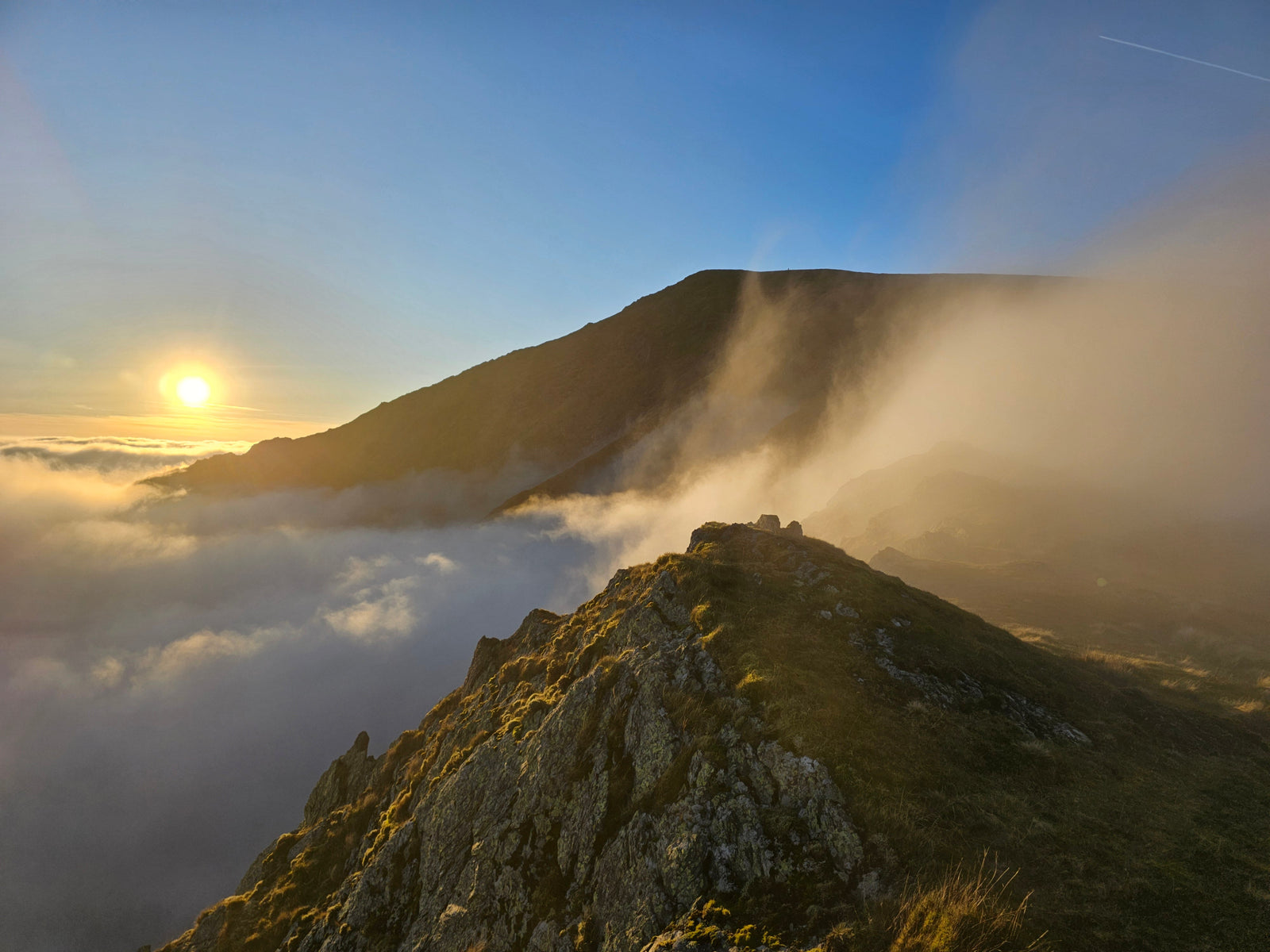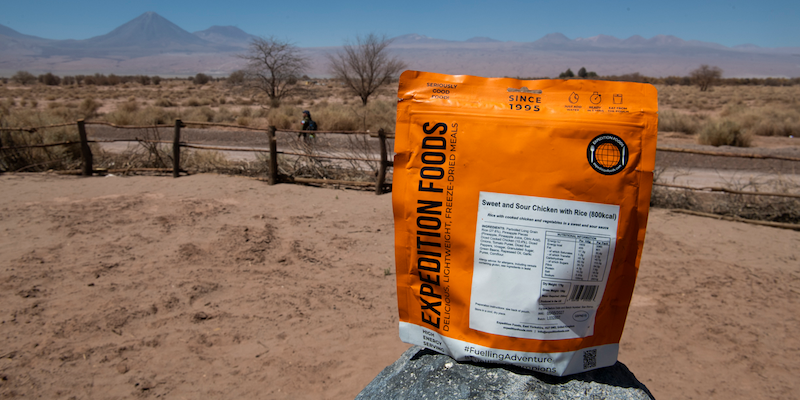-
Meals
-
Ration Packs
-
Special Diets
- Survivor Foods 25-Year Tins
-
Snacks, Drinks & Accessories
- About Us
Karakoram Mountains of Northern Pakistan
October 25, 2024

In August, we travelled to Shimshal in Karakoram Mountains of Northern Pakistan, on an expedition to the Gunj-e Dur valley, eagerly in search of unclimbed mountains. The devastating floods were yet to hit Pakistan, but the lingering effects of the spring heatwaves and the monsoon made for an interesting journey to Hunza (planes, trains and automobiles, comes to mind). Fog in the mountains hampered our attempt to fly to Gilgit, so instead we opted for the long and exciting journey by road. But the bus along the Karakoram Highway proved fruitless, too. After travelling all night we were evicted at a security checkpoint, deep in Khyber Pakhtunkhwa province. The road ahead was lost to a land slide and the police were unwilling to let two foreign tourists continue. Their ultimatum: either the bus would have to turn around, or we had to leave. The bus driver was incredibly helpful though and organised for a local to take us back to Islamabad. We sheltered from the torrential rain along with our bags under the dripping tarp of a sandbag weapon and a large machine gun nearby. Surreal.
We finally arrived in the regional capital of Karimabad on our third attempt, after a 14-hour drive through the stunning Kaghan valley, this time in a private car. We had only a day in Karimabad to pick up the last of our supplies, picking up some dried apricots and nuts, something Hunza is famous for, with every rooftop littered with trays of drying fruits. Wahab, an experienced Shimshali mountain guide and our fixer, met us early the following morning with his friend Rehmat, a driver well-seasoned to ferrying tourists to the Shimshal valley.
The onward journey to Shimshal was an incredible, if somewhat hair raising, 4x4 trip through a deep canyon, eventually emerging into the broad Shimshal valley. Here we met the rest of our team - 3 porters and 2 donkeys. We spent the rest of the day enjoying the vast mountain views, the friendly hospitality of our hosts, and delicious meals cooked from produce grown in the valley.

We reached our basecamp in the main Gunj-e Dur valley (c 4400m) three days later, after a simply amazing trek, a committing and exposed traverse along the steep canyon walls high above the Pamir-e Tang river. This was the highlight of the trip, the full trek to the Shimshal Pass well worth experiencing.
We established our basecamp next to an old shepherds hut, this one making use of an enormous boulder as a roof. The following day was spent acclimatising and performing the chores necessary on any expedition if living in close proximity, washing. First the laundry, then ourselves. This trip will especially be remembered for the large bath-like pools found on the small streams leading into the huge sediment laden torrent below. Absolutely freezing if you’re wondering! Then back to camp for our first proper meal. Expedition Foods had supplied us once again (see our Kyrgyzstan Expedition) with their delicious selection of mountain meals, this time we had chosen meals from their 1000kcal range.

After a further two days acclimatising and moving kit, we established an advanced base camp at 4800m, on an area of flat ground, below the terminal moraine of the Second East Gunj-e Dur glacier. We could have been on another planet, already far above any vegetation. Two days of reconnoitering the largely unexplored glacier followed, trying our best to scout out potential routes in the poor visibility. The effect of the spring heatwaves was clear, with many previously snowy slopes reduced to bare ice. Conditions were not looking hopeful, but on the second day, we spied two promising-looking peaks, with routes that shared the same glacial approach.
To help with acclimatisation and to make for an easier summit attempt, we dropped kit at the base of the routes, below the terminus of the glacier and returned the next day to establish a bivy. At long last summit day arrived. We woke early and set off on the steep moraine in darkness. As dawn approached, we climbed above the cloud to magnificent views across the Gunj-e Dur valley and the mountains beyond. The climb continued up the glacier, we were aiming for the saddle point between the two peaks. By the time we reached the col at 5600m, Rob was suffering with Acute Mountain Sickness, thwarting an attempt to climb the rocky, pinnacled ridge of the higher peak, our main objective. With no easy descent, being stuck high on a rocky pinnacle with worsening altitude sickness was just too risky to contemplate.
We decided to try the lower, snowy peak, as we could quickly and easily descend back down the glacier if needed. But after a short distance, the snow conditions worsened and we soon found ourselves on windslab, with alarmingly large cracks radiating across the snow with each footstep. It was clear that it would be unsafe to continue, with us almost certainly triggering an avalanche. We had to make the difficult decision to retreat to the col and with options for the day eliminated we descended back to the bivy. On the descent we saw the debris of two recent avalanches on the summit slopes.

We made the extremely difficult decision to call an early end to the expedition when we received worrying updates over the satellite phone of the devastating and widespread flooding across Pakistan. Paired with our difficulties of travelling to Hunza, we decided to save our extra days to ensure we had time to get back to Islamabad and our return flights home. We called Wahab and began the laborious process of moving kit back down to basecamp in time to meet the porters. The decision to head back early was a difficult one and played heavily on our minds, although we believe we made the correct call with the information we had at the time. The silver lining was spending a few days exploring the Hunza valley with its fascinating history and beautiful scenery of towering 7000m+ mountains.
By Jon Burgess
Also in Stories

In Praise of the Calorie
February 13, 2025
Norman Hadley on eating in the outdoors, and why he keeps coming back to Expedition Foods.

Jacob Myers’ Surreal Journey to Antarctica
January 23, 2025
Jacob Myers recounts his surreal journey to Antarctica, fuelled by Expedition Foods.

Government Recommended Emergency Kit
November 21, 2024


